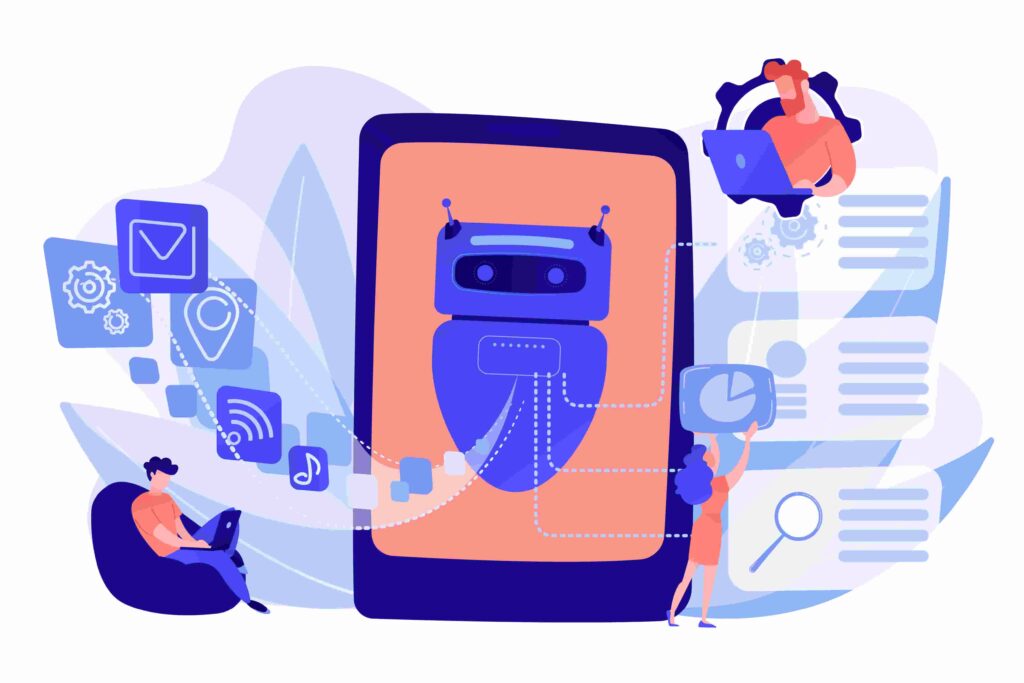verThe way of doing business is constantly changing to please and retain customers. Some time ago, having a website was enough to complement the physical sales, but today business managers have to go further and think about an omnichannel strategy.
If consumers have several channels to interact with your business, you have to integrate all these communication channels to support users in their new journey and ensure customer satisfaction.
What is omnichannel?
Omnichannel is a marketing, sales, and service strategy that aligns a company’s online and offline channels to reduce issues between touchpoints and provide an integrated customer experience.
Then, more than offering contact channels between customers and the company, omnichannel strategies allow channels to exchange information through a shared database.
As a result, a service that starts on one channel can continue on another channel without the customer having to repeat the information or request. This way, a company can build familiarity with its audience and offer several channels so customers can feel more confident regarding a company’s service.
Why are omnichannel strategies becoming so popular?
Markets are more competitive and advances in the digital environment are changing the buying behaviors of consumers. Then, it’s important to find new ways to handle these changes and ensure a differentiated experience.
In this context, omnichannel has emerged as a solution to meet consumer demands and show that a company is reliable. By providing different channels for interaction, communication, and offers, a company gets closer to its audience.
Then, the strategy of transforming buying into a unique and convenient experience can be a differentiator for a company to stand out from the competition.
How does an omnichannel strategy work?
An omnichannel strategy integrates a company’s communication and sales channels, ensuring synchronization between them and avoiding issues in the buying journey of customers.
Therefore, regardless of the platform selected by a customer, when a company uses the same speech and maintains the same service level, a high level of integration is provided, making the journey more fluid, efficient, and agile.
See some examples below:
-
Magazine Luiza
Magazine Luiza is a Brazilian retail chain and one of the main examples of companies with an omnichannel retail strategy. After implementing digital transformation, the company launched its digital operations in 2015 through marketplace and app.
Also, the sales team started using an internal app to manage physical sales, allowing centralized information. Another important aspect was the creation of Lu, a digital character present in all marketing communication actions of the company.
-
Nike
Between 2018 and 2019, Nike invested 1 billion dollars in omnichannel marketing actions, which generated a huge increase in customer loyalty and digital sales, leading to a year-over-year growth of 35% in digital revenue.
-
Starbucks
Another example of an omnichannel strategy is the one adopted by Starbucks, a company that constantly innovates its customer service through marketing and sales actions.
Starbucks offers a customer card that is used for payment and can be reloaded via app, physical stores, and website. In some places, the company’s app allows customers to check the nearest Starbucks store and estimated waiting times, and place an order before arriving at the store.
-
Apple
Apple is another company that uses an omnichannel strategy for differentiated customer service. For example, customers can use the app to schedule a support appointment at a store and receive an alert when an online purchase can be taken at a store.
Why you should use an omnichannel strategy in your company
According to a report published by PwC, the number of companies investing in omnichannel strategies increased from 20% in 2012 to over 80% in 2020, highlighting the importance of implementing a solution that integrates all channels.
This is important because online and digital tools have allowed consumers to search and buy products from anywhere, using any device, which expands the possibilities of marketing campaigns.
This way, omnichannel strategies help personalize communications and provide great customer experiences, ensuring customers have their problem or question resolved quickly and efficiently, regardless of the channel they choose.
Benefits of omnichannel strategies
A good omnichannel strategy allows process optimization and improvements in services, sales, customer loyalty, and brand image. Its benefits also include:
1. Better customer experience
Consumers use different devices and platforms to check product prices, track orders, and buy products. In this context, an omnichannel strategy is important because it delivers the same customer experience through any channel and to any customer profile.
2. Customized service
When a company uses multiple channels to contact its audience, it has access to more consumer data. An omnichannel strategy allows companies to unify data so the marketing team can have a clear perception of the demographic and behavioral profile of customers.
It helps companies manage their campaigns more effectively and allows customers to make fast buying decisions.
3. Service efficiency
Omnichannel strategies speed up company’s processes and enable more assertive problem resolution. As a result, service is faster, increasing customer satisfaction.
4. Reduction of operating costs
With centralized information, the entire process is optimized and the company saves money, avoiding investments in different platforms to manage customer service.
5. Optimization of sales opportunities
When a company offers integrated touchpoints and the same service quality across all channels, it has more opportunities for online and offline sales. After all, in the omnichannel context, a customer can search for a product online, ask questions via messaging app (such as WhatsApp), and buy it at a physical store, and their entire history will be logged in the system.
6. Support available on the customer’s preferred channel
By operating on different channels, a company offers support 24 hours a day, 7 days a week. Also, customers receive standardized service at any of the touchpoints and can choose the channel they like.
What’s the difference between omnichannel and multichannel marketing?
Although many people can’t distinguish omnichannel from multichannel, these strategies have some differences.
In omnichannel, several integrated methods of offer, distribution, and communication are used, sharing consumer information so that these channels don’t have to repeat it, ensuring optimized processes and great customer experiences.
However, in multichannel, a company has several customer contact channels, such as Facebook, Instagram, email marketing, Google ads, among others, but they don’t interact with one another.
In other words, the company monitors what each channel is doing, but they are not integrated.
What’s the difference between omnichannel and other channel strategies?
All terms below refer to consumer experience with a company’s channels. However, each of them has its own particularities:
-
Multichannel
A multichannel strategy offers several buying channels, such as website, app, and physical stores, but no information is exchanged between them. In this case, salespeople of physical stores don’t know about sales made through the website and vice versa, promoting competition between buying channels.
-
Cross-channel
In a cross-channel strategy, channels can be combined to offer more convenience to customers; for example, a customer can buy a product online and pick it up at a physical store. However, it is not a continuous experience.
-
Omnichannel
An omnichannel strategy connects all channels of a company, allowing one channel to support the other while offering a better buying experience, which increases customer loyalty and strengthens online and offline relationship.
-
Single-channel
A single-channel strategy is applied when a company has only one sales channel, which can be a virtual store or a physical store, for example.
How to implement an omnichannel strategy in your company
In order to implement an omnichannel strategy and ensure all its benefits, the first step is to understand the buying habits of your target audience. It will show you where to find your audience and the best points of contact.
After choosing online and offline channels, it’s time to align and personalize them, which includes:
- Testing channel integration;
- Assessing the results of the omnichannel strategy;
- Identifying faults and areas of improvement in processes.
However, integration should not only be a characteristic of marketing strategies; that is, sales, service, and marketing departments should be aligned to offer the best customer experience.
A successful omnichannel strategy should allow customer data integration. So, it’s important to store information in a single log or history, enabling a more personalized service.
For this reason, a good management and monitoring tool should be adopted, which allows proactive service and fast problem resolution.
What are the main challenges of an omnichannel strategy?
Integrating channels and offering an excellent customer experience can be a huge challenge. After all, you need technology, have in-depth knowledge about the company, and monitor all business departments.
Also, ensuring customer satisfaction is a delicate mission, as it involves the expectations and opinions of different people about the company and the creation of a positive customer experience.
Conclusion
Now that you know the importance of omnichannel operations, why don’t you learn more about the perfect omnichannel platform for your business? Milvus is an omnichannel customer relationship platform with comprehensive solutions to create reliable experience for your customers and productive experience for your teams.
Contact our consultants and take a free trial.








